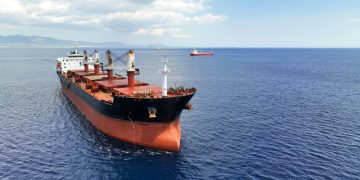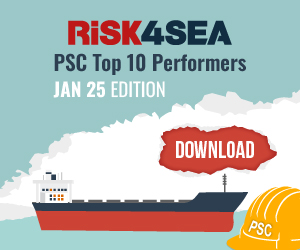The European Commission published on 19 February the results of the EU Ship Recycling Regulation evaluation.
The assessment concludes that the Regulation has largely achieved its objectives and, notably, through the establishment of a dedicated European List of authorised ship recycling facilities, has contributed to higher environmental and social standards in ship recycling practices. It has also become an important benchmark used by stakeholders and authorities within and outside the EU.
However, the Regulation’s effectiveness has been significantly undermined through the practice of shipowners changing the ship’s flag from a Member State’s flag to a non-EU flag shortly before being recycled, incentivised by the additional revenue from selling end-of-life vessels to South Asian yards.
The evaluation also highlights that hazardous materials inventories are still too often absent during the vessel’s operational life. At the recycling stage, the quality of inventories is often insufficient.
Evaluation next steps
This evaluation precedes the entry into force of the Hong Kong Convention in June 2025, which sets out international ship recycling standards that are less stringent than the EU Ship Recycling Regulation in some areas. The Commission plans to assess how this Convention will be implemented and possibly improved towards stricter global standards.
At the same time, the Commission will continue to monitor the implementation of the Regulation, collaborating with Member States, non-EU countries, and stakeholders. It will focus on preventing EU-flagged ships from circumventing their obligations to have these ships recycled in EU-listed facilities, clarifying standards and ensuring penalties for infringements.
European list update
On 18 February, the European Commission also adopted the 14th edition of the European List of ship recycling facilities. The Commission has added one yard in the Netherlands and one yard in Türkiye. Three yards, which were located in Latvia, Lithuania, and Türkiye, have been removed.
The European List now contains 43 facilities: 31 yards located in Europe (EU, Norway and UK), 11 in Türkiye, and 1 in the United States.
Furthermore, European ship owners possess around 30% of the world’s fleet in tonnage. Many ships, however, are dismantled outside the EU, mainly in South Asia, under conditions that are often harmful to workers’ health and the environment.
The EU’s Ship Recycling Regulation was adopted in 2013 to provide a regulatory framework for the recycling of large sea-going vessels sailing under an EU Member State flag.
The Regulation includes:
- Requirements for ships and recycling facilities;
- Limits and prohibitions on the installation and use of hazardous materials on ships (i.e. asbestos);
- The European List of compliant ship recycling facilities located in the EU and the rest of the world.
Lessons learned
- Given the Ship Recycling Regulation’s (SRR) effectiveness is being considerably undermined by re-flagging, it should be considered how to address this problem so that the SRR’s key provisions can be effectively implemented. This is crucial for achieving the SRR’s current core objective of ensuring EU-flagged ships are dismantled in safe and environmentally sound facilities. In this context, it is essential to clarify how it is determined that a ship is destined to be recycled or become waste, on the one hand, and who is the responsible owner, on the other hand, considering the role cash buyers currently play in trading end-of-life ships. Appropriate mechanisms should then be considered to prevent the owners of EU-flagged ships from circumventing their obligations to have these ships recycled in EU-listed facilities. Different options in that regard could be considered. One of them could be to continue working on developing a financial incentive as referred to in Article 29 of the SRR. This could take the form of a ship recycling licence for all ships calling at an EU port, bridging the revenue gap between dismantling in EU-listed facilities and in facilities not operating in a safe and environmentally sound way. Another option could be to apply the concept of a ship’s ‘beneficial owner’, instead of the registered owner linked to a country’s flag. Both ideas gave rise to polarised views among stakeholders. The impact of such sensitive measures under the SRR deserves a dedicated analysis in another context.
- The possibility of upgrading the Hong Kong Convention’s provisions, on the basis of the SRR’s provisions, is seen by shipowners’ associations and some EU Member States as a possible promising step towards more ambitious and harmonised global standards for ship recycling.
- At the same time, clarifying the SRR standards to ensure a level playing field for EU facilities could also be considered. This could involve, for example, developing additional and/or more specific criteria to evaluate waste management and steel recovery operations, implementing effective pollution control measures and using cleaner dismantling and recycling technologies and methods.
- The evaluation shows that the SRR and its European List have been effective at ensuring there is sufficient capacity for the dismantling of ships within its scope (including ships that changed flag in the year prior to dismantling). However, it also concludes that capacity needs to keep growing to be able to meet the demand for ship recycling that is expected to increase significantly over the next 10 years.
- To have more qualitative and reliable inventories of hazardous materials, consideration should be given to how the whole chain of responsibilities can be strengthened: from the qualifications of experts preparing inventories of hazardous materials and the way the Materials Declaration and Suppliers’ Declaration of Conformity are obtained to methodological guidance and investigation tools that are necessary for carrying out effective controls under the SRR.
- To properly enforce the SRR, all EU Member States should have specific provisions on penalties for infringing it and ensure that the penalties are severe enough to discourage noncompliance. The interplay of the SRR with other legal instruments also needs to be clarified.
- To avoid there being an unnecessary administrative burden once the Hong Kong Convention enters into force, consideration should be given to how to streamline reporting or certification requirements arising from the co-existence of the SRR and Hong Kong Convention.
- Finally, any future revision could further assess the opportunity for the SRR to be made more relevant to the EU’s ambitions in terms of EU’s competitiveness, resilience, and climate neutrality, including through efficient and circular use of resources.


































































